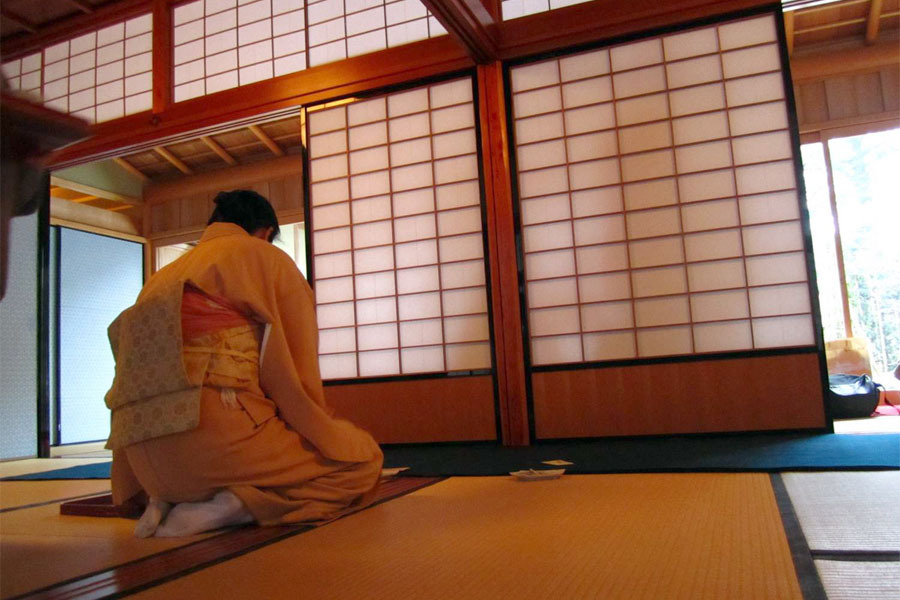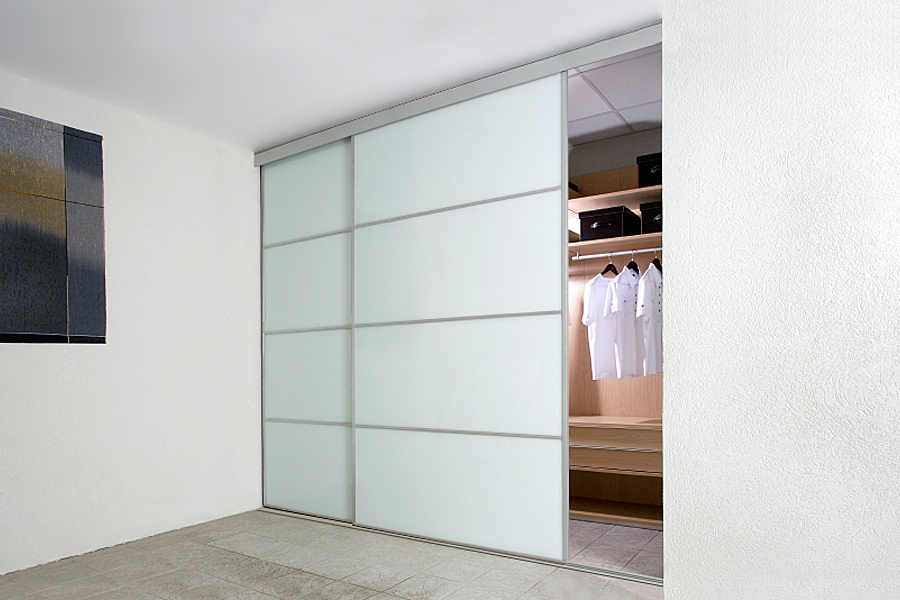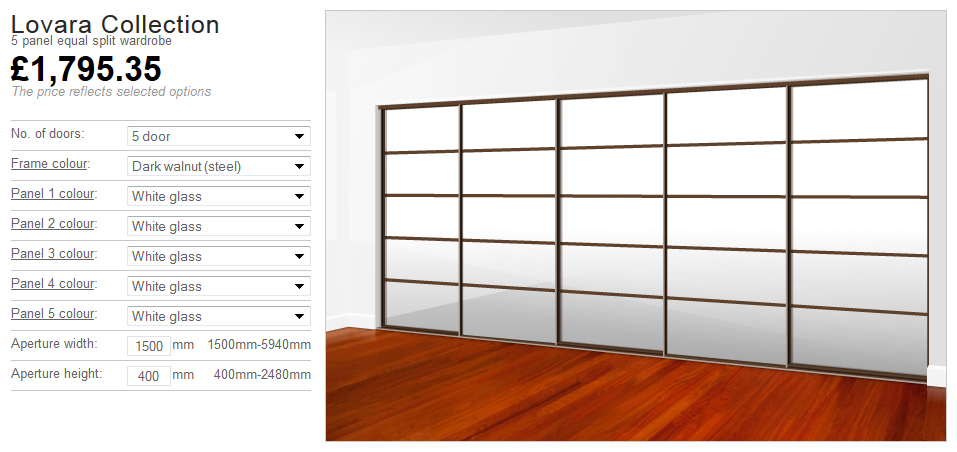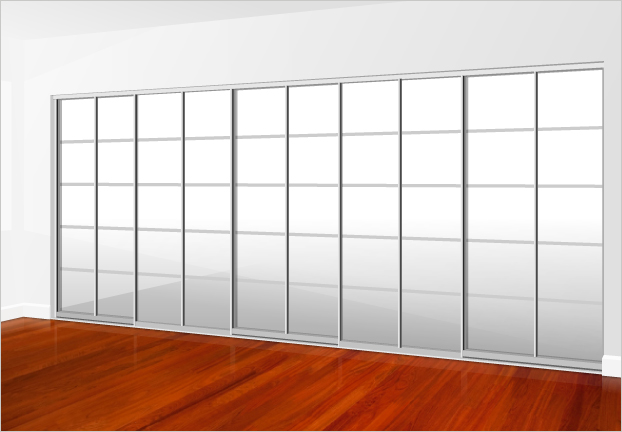REQUIRE A BESPOKE LOOK?
We offer a custom design
service at NO extra cost.

Image by www.wanderinghokies.com
The original shoji screen and doors were made from rice paper stretched over a framework to produce a lattice effect. They were very versatile often being slid into position as and when required.
Now you can create a shoji sliding door of your very own from our Japanese sliding door kits. It could be a Japanese style sliding wardrobe or a Japanese shoji room divider.
Our oriental wardrobe & room divider door kits offer a wide choice of materials from which to create the shoji look and are somewhat more robust than traditional rice paper.
Many of our customers have been inspired by the clean and simple lines of our sliding wardrobe doors and room dividers that offer a simple elegance and can be likened to those found in traditional oriental or far-eastern interiors. The effect achieved is reminiscent of the traditional Japanese room dividers.
Our Oriental Sliding Wardrobe Doors provide maximum practical storage space. They allow you to create a Shoji feature in any room which is a winner on both counts!
Our Shoji style doors will be an asset in your own 'Tatami' room whether that be your place where the door glides shut on the rest of the house and you quietly contemplate the day ahead or reflect on the day past. Or It may be a feature in the place where you exercise both mind and body.
Someone once said "the room where you exercise, should be calm. This is particularly true for yoga and meditative forms, but it's a good rule of thumb for any exercise room".
This particular look is most apparent when our Milano, Verona or Lovara collections are used (where the door panels are split into three, four or five equal depths) and the panel materials kept light in colour with, for example, white glass.
The use of shoji originated with Chinese folding screens around the 4th Century BC, when they were depicted in literature and on the walls of tombs. These screens were unlike their Japanese descendants in that they were heavy and were not intended to be moved around.
It was only when the folding screen crossed over to Japan that it was developed to become the lighter, more versatile variation that we know today.
Shoji screens were used in a variety of ways; as lightweight room dividers, for use during tea ceremonies and as elements in outdoor processions and festivals.
Portuguese missionaries in the 16th Century saw the functionality of these screens and adapted them to create a European version. However, their popularity declined when Japan closed its borders to trade.
Once Japan’s borders opened up again in 1853 variations of the screen were soon seen again in Europe and also America. Today, the shoji screen is often used as a way to divide a room and as a display of simple, yet elegant art.
The traditional construction of shoji is that of rice paper stretched over an outer frame of wood which holds together a lattice of thinner wood or bamboo struts. However, in modern times this rice paper, or 'washi', has been superseded by modern, mass-produced papers or sheer plastic films. The doors usually consist of three or four rectangular panels, although in some cases the frame can be divided up into smaller squares.
Our oriental style sliding wardrobes and room dividers are available in the following configurations:
3 panel equal split Milano sliding wardrobe door;
4 panel equal split Verona sliding wardrobe door;
5 panel equal split Lovara sliding wardrobe door
Traditional wood frame Japanese Shoji doors
The traditional oriental screen would have used a wooden frame and dividers and this same look can be achieved using our wood effect frames and matching H-bars. However, please note that for wooden framed doors each panel must span the complete width of the door. For multiple panels please choose an aluminium frame.
Contemporary aluminium frame Japanese Shoji doors
Our aluminium framed shoji doors offer a contemporary look and will be your choice for that light and airy feel especially when used with translucent or pale coloured glass panels. Specify one of our coloured frames. For example this contemporary 2 door shoji style sliding wardrobe is from our Verona Collection specifying white glass panels and silver steel frame.

To achieve the narrow panel width shoji screen look you should use our bespoke door service at no extra charge to specify the number of panels you wish to incorporate across the width of each door. (Aluminium frames only with matching H-bars)
You should also use our bespoke door service at no extra charge to order room dividers as they need panels on both sides of the frame.
Use our online design tool to choose your doors and give them your own shoji look. See our example below.

How to get the look – example using our online design tool
To achieve the shoji look please go to the Verona Collection or Lovara Collection as in this example, select the number of doors you require (we chose 5), choose the door frame of your preference (Dark Walnut in this example) and then select white glass for all of the door panels. Add the width and height of your opening.
The resulting design will show you how your sliding wardrobe doors or room dividers could look using this oriental inspired theme.
How to get the look – example with multiple panels spanning the width of each door
Please use our bespoke door service at no extra charge to specify this look. It is not currently possible to specify multiple panels spanning door widths using our online design tool, however, the image below should give you a good idea of what your design could look like.
In this example we have specified silver aluminium frame with white glass panels The additional matching h-bars divide the panels so that 2 panels are used across the width of each door. There is no maximum to the number of panels you can specify.

Why not give our Design Team a call on freephone 0800 035 1730 now to answer any questions you may have and give you your bespoke design quotation.

We offer a custom design
service at NO extra cost.
Follow these simple guidelines to
get the perfect fit for your sliding
wardrobe doors.
The sliding wardrobe doors are
very easy to install so you don’t
have to be a DIY expert.
Request FREE samples to help
with the design process and
colour matching.